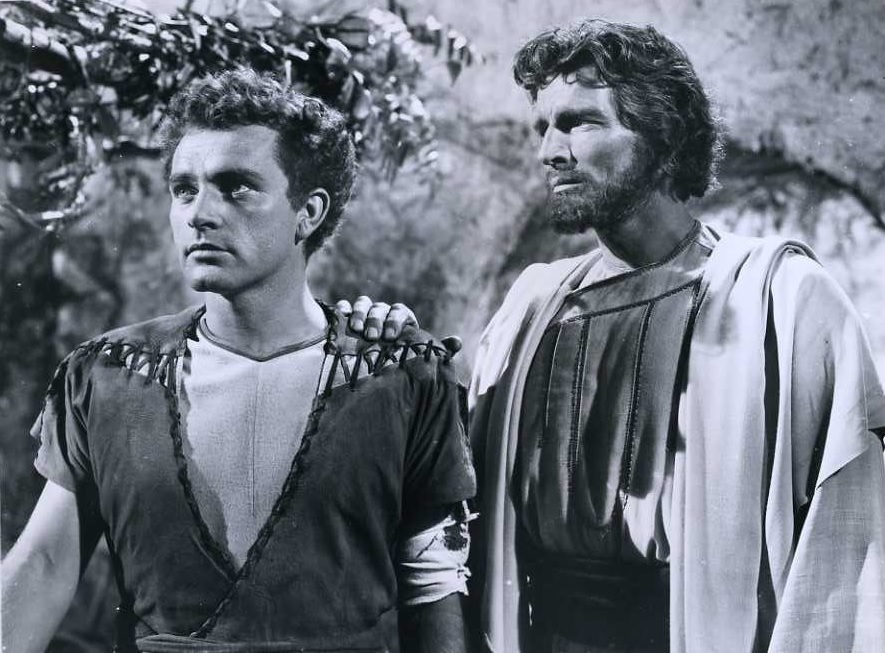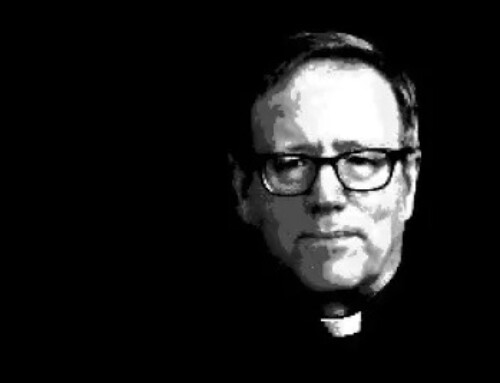The somewhat forgotten masterpiece “The Robe is my movie recommendation for Lent this year. Released in 1953, “The Robe” is the story of the Roman tribune Marcellus and his quest for personal sanity that eventually leads to spiritual magnificence. Marcellus is a spoiled son of a Senator who spends his days in Rome drinking, carousing and insulting the future Emperor Caligula. When word gets to Caligula about the feckless Marcellus, he banishes him to Jerusalem.
While in Jerusalem, Marcellus takes part in the Crucifixion of Jesus. Some of Christ’s blood drips onto Marcellus; he is wrapped in Christ’s robe, and quickly goes mad. In my opinion, this is the greatest part of the film: is Marcellus insane or just ripped between the two worlds of Roman decadence and Christian purity. He returns to Rome, and is hurriedly sent back to Palestine to find the robe. Will destroying the robe free him of Christ’s power? Marcellus finds out that the robe did not bewitch him, but opened his eyes to the error of his life and the wicked choices he has made.
The great truth that this film holds for many of today’s viewers is the witness it gives to the power of not only God’s forgiveness, but His ability to heal our deepest most secret wounds. In a world were people try in vain to mask their pains and sorrows with drugs, alcohol, luxury or sex, “The Robe” reveals the soothing force of God’s curative strength. The star of “The Robe” is an interesting case in point. The super-talented Richard Burton spent much of his life wrestling with his personal demons while being overpowered by his alcoholism and his obsession with the ethereally beautiful, but self-absorbed Elizabeth Taylor. In the end, possessing the most beautiful woman in the world did not bring happiness. When Marcellus finally touches the robe for a second time he convulses with joy. All the shame and heaviness of his sins are thrown off. By embracing Jesus Christ, revealing to him our sins (through the Sacrament of Penance,) in the film we see Marcellus confess to Saint Peter, we can start life over again – free from the burdens of our transgressions.
I regularly rewatch the “The Robe” at least twice a year. Seeing the movie as a kid, it was one of the first VHS tapes my dad bought, is a happy memory from childhood. Then, I was awed by the bravery and selflessness of the heroic centurion played by Richard Burton. Over the years, the movie has meant different things to me at different times. When I was in the gay lifestyle, proudly above it all, and pretending to be a film aficionado, I thought “The Robe” and all 1950s Biblical Epics of its ilk were stupendously stupid, simple minded, and overly sentimental. When I got unceremoniously belched out from the homosexual world, the same 20 year old copy of the film was still at my parent’s house. I wanted to see it again; for, it was like a gentle memory from the past. At that viewing, it was all about the conversion story: how the alcoholic sex addicted man who crucified Christ got a second chance. I was left with such a feeling of hope. Now, I particularly notice the speed at which the conversion takes place: one moment the man is a lustful hater, the next he is a peaceful child of God. It’s truly miraculous; mirroring the lighting strike of St. Paul. For, this also fills me with optimism for my gay brothers and sisters; who are so enamored with the modern gay lifestyle and truly blinded to the Truth as revealed by Our Lord Jesus Christ. At times, it looks truly hopeless. But, then, I must remember that today they maybe a completely lost soul, but tomorrow they could be a Saint. Anything is possible with God. We should never count anyone out.
Author’s note to picture above: This is one of the most incredible scenes in all of screen history – the moment when the centurion touches the Robe and is instantly cured of his sinful demonically induced maladies. I had a similar experience, when I laid dying in a hospital bed, it was as if the Lord Jesus threw His cloak over me and a wave of calm enveloped me; a few seconds before I was cursing anything to do with Him. For there are many souls and many sinners; and many types of conversions: some ease into it after years of study, others think and argue and ponder and must be convinced, others just get forgiven and instantaneously give their lives over to God – such as my early patron St. Mary Magdalene. I was one of the latter examples: as time was short for me and God took pity on this helpless fool.
Oftentimes, I am asked to describe or recount my conversion story; this is a difficult endeavor as my encounter with Jesus Christ was not as much of a process as it was a single moment. As with many aspects of my life, my conversion was not an Augustinian process of wandering, experimentation, discovery, research and resolution, it started happening before I knew it – almost before I could even say: “Yes.” For this reason, I find converts such as St. Paul, St. Francis of Assisi, and Alessandro Serenelli so compelling and the rather laborious and overly-intellectual journeys to God somewhat off-putting. Although I realize that everyone’s walk to Christ is different – mine is the opposite of the rather word-centered (Protestant) exercise involving an extreme deep-dive into Bible study. When the Lord took pit on me, I hand’t touched a Bible in well over a decade. Therefore, never underestimate the possibility of a radical conversion – especially in terms of your seemingly most lost relatives and friends. Because, what I have always found incredibly distinctive about Catholicism is its inherent mysticism – the continual presence of the indefinable and the inexplicable that defies explanation. And, that’s how I came to the Church – I can’t explain it.







Joseph,
On Facebook you wrote:
“Victor Mature was a horrible actor, but the brilliance of Richard Burton almost makes him disappear; Mature is the one major flaw in the film – the others actors, Simmons, Jay Robbinson, and Michael Rennie were wonderfully cast.”
It’s certainly true that Richard Burton was a great stage actor but he didn’t have confidence in his ability to act well on film. Here is Burton talking about playing a scene during “The Robe” with Victor Mature:
“Against him I looked like an amateur,” Burton later declared of his co-star. “We had a scene where the robe falls onto me and I scream like a girl before being overcome with religious fervor. And all the time Victor just stands there gazing into heaven with great conviction. I asked him, ‘How do you do it? What are you thinking?’ He said, ‘I’m thinking of the money they’re paying me.’ What a wonderful man!”
Actually the critics thought Burton was wooden in the Robe and he throughly disliked his own performance. I agree that Victor Mature was not the world’s greatest thespian. However, many like his performance as Doc Holliday in John Ford’s great “My Darling Clementine”.